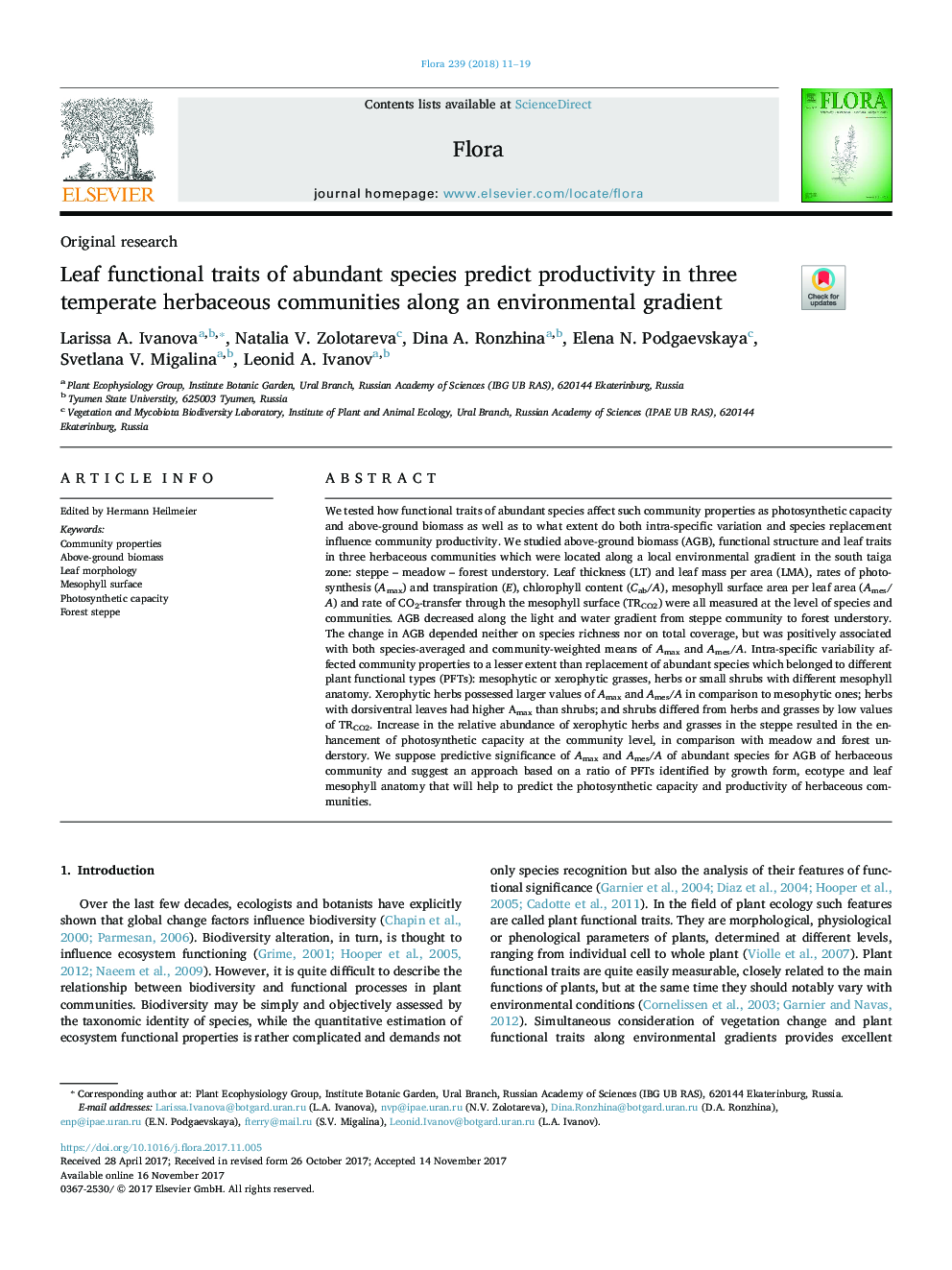| Article ID | Journal | Published Year | Pages | File Type |
|---|---|---|---|---|
| 8470198 | Flora - Morphology, Distribution, Functional Ecology of Plants | 2018 | 9 Pages |
Abstract
We tested how functional traits of abundant species affect such community properties as photosynthetic capacity and above-ground biomass as well as to what extent do both intra-specific variation and species replacement influence community productivity. We studied above-ground biomass (AGB), functional structure and leaf traits in three herbaceous communities which were located along a local environmental gradient in the south taiga zone: steppe - meadow - forest understory. Leaf thickness (LT) and leaf mass per area (LMA), rates of photosynthesis (Amax) and transpiration (E), chlorophyll content (Cab/A), mesophyll surface area per leaf area (Ames/A) and rate of CO2-transfer through the mesophyll surface (TRCO2) were all measured at the level of species and communities. AGB decreased along the light and water gradient from steppe community to forest understory. The change in AGB depended neither on species richness nor on total coverage, but was positively associated with both species-averaged and community-weighted means of Amax and Ames/A. Intra-specific variability affected community properties to a lesser extent than replacement of abundant species which belonged to different plant functional types (PFTs): mesophytic or xerophytic grasses, herbs or small shrubs with different mesophyll anatomy. Xerophytic herbs possessed larger values of Amax and Ames/A in comparison to mesophytic ones; herbs with dorsiventral leaves had higher Amax than shrubs; and shrubs differed from herbs and grasses by low values of TRCO2. Increase in the relative abundance of xerophytic herbs and grasses in the steppe resulted in the enhancement of photosynthetic capacity at the community level, in comparison with meadow and forest understory. We suppose predictive significance of Amax and Ames/A of abundant species for AGB of herbaceous community and suggest an approach based on a ratio of PFTs identified by growth form, ecotype and leaf mesophyll anatomy that will help to predict the photosynthetic capacity and productivity of herbaceous communities.
Related Topics
Life Sciences
Agricultural and Biological Sciences
Ecology, Evolution, Behavior and Systematics
Authors
Larissa A. Ivanova, Natalia V. Zolotareva, Dina A. Ronzhina, Elena N. Podgaevskaya, Svetlana V. Migalina, Leonid A. Ivanov,
